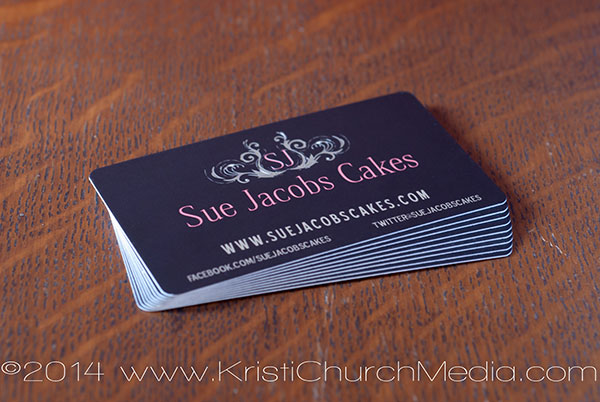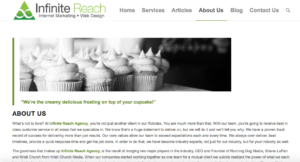This past weekend I had the opportunity to dine at a new local eatery. Simply upon driving up to this new establishment, one is pulled away to a feeling of eating someplace Martha Stewart herself would frequent.
I walked into The Henry with a smile from ear to ear with the expectation that it would be as much of a breath of fresh air on the inside as it was on the outside…and it was. The building is more wide than deep and the lounge that runs along the front of the restaurant provides simple, yet elegant seating that becomes what I call impromptu gathering space. It’s the perfect area to wait for your table or have a bite on the spot if you’re just planning to dine on foods that are easily eaten without much effort.
The contemporary colors of cream, steel blue, gray and black were mixed with different beautiful patterns and textures and everything from the floor to ceiling drapes to the elegant chairs in the lounge to the wall coverings, remind me of a place that I’d love to dig into, be comfortable, take off my coat and stay awhile. Founder Sam Fox knows the importance of signature branding and his use of hammered steel and brass accessories throughout the restaurant consistently reinforces The Henry’s concept of being “the greatest neighborhood restaurant”. There was an incredibly delicious fragrance wafting out of the kitchen that had my attention. Looking around at all the happy faces, my perception is that this was surely going to be an amazing experience…and it was.
Gifting the first impression experience.
This is my case in point. We sometimes forget as business people that perception is reality and first impressions matter now more than ever. I’ve been fortunate to have always been on top of them, delivering a solid hand-shake with eye contact and a smile that would even melt the angry heart of The Hulk. Strategically I’d use first name recognition out of the gate while our initial conversation was an opportunity to learn about the other person so I could use that info in building our relationship later. I delivered a great first impression experience.
Then there comes the moment at hand, when you deliver your business card. There really are three ways these next few moments can go. 1. Upon receiving the business card the new contact says “Oh nice.”…and that’s where it ends. 2. The acquaintance takes a quick peek and drops it into a purse or tucks it into a pocket, continues to smile and nod (red flag inserted here!! “Danger Will Robinson, Danger!”), while you babble on. Or 3…Your new best friend grabs it up, flips it over and has no problem interrupting anything you might be saying at the moment to proudly gift you back the approval we all LOVE to hear. “Wow…I love the color and how it feels! Nice business card!” BAM!! That’s what I call gifting the super-duper first impression experience!
Your business card helps tell the rest of the story and is an extension of who you are. It’s the icing on the cake to your awesome introduction and great first impression that you’ve just gifted a new contact. It can also be used to start the story on the front end to break the ice. Think about it. Not all of us can deliver a super-duper first impression experience as described above. If you have an incredible business card, it not only gives a strong impression of your brand, but also gives you instant credibility. So what if you have a sweaty palm or have the handshake of a limp cold fish…you hand over that stunning business card and none of that will matter! The clouds will part; the angels will start singing and light will suddenly appear over your head. You’re somebody…that obviously has something worthwhile to say! And that’s an experience your new best friend will not soon forget.
So how do you create a business card that makes such an incredible statement? Here’s a few tips that will change the way you design your next business card and help you deliver a super-duper first impression experience going forward!
Simple is not just better, its best.
What is the message you really want your business card to say? Can you get that point across with just your logo and simple contact information? Is it unique? Designing a clean and unique card that will stand out in a sea of other business cards will allow the person on the receiving end to comprehend your brand and message immediately. Is it consistent with your brand?
My good friend and client came to me with a troubled heart. She said that at networking groups when she saw her business card get passed around the table it appeared like any other card and blended in with everyone else’s. While it did convey she had a wedding cake business, it was printed on thin stock so it was easily bent and flimsy. It had a design that was out of style by at least 4-5 years and no longer suited her business goals. The fonts on the front of the business card were a telltale sign as they outdated her design.
I went to work creating Sue’s new brand identity and design. I listened to her long-term business goals and what it was that she intended to say to her clients when they reach out and experience her business card. In order to create a classy, timeless business card we performed a case study of her target demographic. She wanted to get to a place where she could reach the affluent bride and be among the top wedding cake designers in Arizona. Creating a brand and business card that was synonymous with her new message put us right on track. Together, we created a design that would speak to her target demographic and that will also stand the test of time for a few long years. She’s thrilled with the results and has had the opportunity to gift her new contacts the super-duper first impression experience time and time again.
These aren’t your papa’s business cards.
The simple rule only applies to the design. Plan to invest a little more in the business cards so you have a nice weighted 14pt or 16pt stock. Going with a heavier stock conveys a few unspoken facts about you as a business person. 1. That you’re serious. 2. You understand the value of making a strong first impression and 3. That you will take as good care of them as you will yourself. It sets a precedent as to how you’ll care for their business.
If you’re targeting an affluent client, I advise staying away from a glossy finish and going with a nice silken matte version that holds depth of color well. It’ll speak volumes. Remember, we’re looking to drive an incredible first impression experience here. A cheap flimsy business card on glossy paper will not bring you that result.

Not all printers are created equal.
At Infinite Reach, LLC, we only use top end print houses for all of our work and the work we provide our clients. We’ve been around the block with the economy printers and the mixed results we receive are just not worth the time and effort for the dollars we’re trying to save. One run we might have perfect color, another run there’s a dimple in the lower half of the business card in different points within the 500 card run. It’s simple. If you are going to go with an economy printer, expect economy results. There is a time and place for every print job, however, if you really want to garner maximum impact and gift that super-duper first impression experience, invest in a good print house that you can rely on to be consistent each and every time.
That’s not to say that not all actual print machines within a print house are created equal either. Even top level printers can have their inconsistencies. Color variations can happen from machine to machine within a print house. They’re not all calibrated equally. If you’re using deep or dark colors for your main business card color you may see slight variations between runs. This is normal. If the colors are seriously out of whack—definitely reorder. They’ll be happy you mentioned the issue as they might not realize the problem.
Give people a reason….
To either really want to keep your business card for them self, or share your card with others. “If you create a beautiful artifact that is kept rather than thrown away, it will live on,” says Prescott Perez-Fox. Prescott was a contributor to Business Insider in 2012 and goes on to say “people will save a great card even after copying the info—they may even give the card to a friend just to experience it.” This is a perfect business referral. They’ve now become a referral partner and want to see you succeed. Nice!
To expand on Perez-Fox’s thoughts, do something that may feel a little archaic and follow up with a hand-written thank-you-for-the-meeting note (very classy move, I might add). Include a few more of your business cards and say something clever like: “I was so happily surprised by the way you responded upon receiving my business card when we first met. I thought I would send you a few more in case you’d like to pass them on.” This shows you believe that your new contact is influential and that’s just good business juju.
So in summary, creating a business card that will pop isn’t rocket science. Keep the design simple while staying true to your brand and message. Less is more. Stick to matte finish, a nice thick card stock and find a great print house that you can rely on. That’ll make all the difference in the world. As for different sizes and shapes—that’s the cherry added to an already delicious sundae. Start with the basics and go from there and you’ll be gifting that super-duper first impression experience yourself in no time!
Are there any other great points I’m missing? Join the conversation!
Till next time,
Kristi














